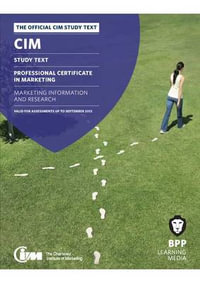| Foreword | p. 9 |
| Foreword | p. 11 |
| Introduction | p. 18 |
| What is performance management all about? | p. 19 |
| Redefining the performance concept | p. 20 |
| Problems with the traditional approach to performance management | p. 24 |
| Our view on performance management | p. 29 |
| Performance management at the corporate level | p. 32 |
| The performance management process | p. 36 |
| Overview of the performance management process | p. 36 |
| Strategic planning as the cornerstone of performance management | p. 38 |
| Financial planning and resource allocation | p. 42 |
| Target setting and cascading | p. 44 |
| Defining key indicators to measure performance | p. 48 |
| Monitoring execution and performance reporting | p. 53 |
| Evaluation and rewards | p. 56 |
| Conclusions | p. 64 |
| Clear strategic focus a winning and living business strategy | p. 70 |
| What is strategy? | p. 71 |
| Formulating winning strategies | p. 75 |
| From a winning strategy to a living strategy | p. 92 |
| Conclusion | p. 98 |
| Collaborative structure: organisational design for high performance organisations | p. 102 |
| Introduction | p. 102 |
| Vertical and formal design elements | p. 105 |
| Horizontal and formal design elements: cross-functional and project-based terms | p. 110 |
| Managing informality: the concept of lateral leadership | p. 117 |
| Vertical and informal design elements: reverse controlling and informal networks | p. 123 |
| Horizontal and informal design elements: communities of practice, socio-technical systems design and coaching | p. 127 |
| Conclusion | p. 131 |
| Creating an engaging climate | p. 134 |
| Beyond the individual, the manager and the formal performance management system: the impact of climate | p. 134 |
| Creating an engaging climate through empowering jobs | p. 136 |
| Creating an engaging climate through strong people management skills | p. 141 |
| Creating an engaging climate through constructive feedback exchange | p. 146 |
| Creating an engaging climate through reward and recognition | p. 149 |
| Creating an engaging climate in times of crisis? | p. 153 |
| Conclusion | p. 154 |
| Rewarding for performance | p. 158 |
| What is pay for performance? | p. 159 |
| How do you pay for performance? | p. 160 |
| Who is eligible for pay for performance? | p. 160 |
| Which pay instruments can be used to pay for performance? | p. 161 |
| What elements of performance are taken into account? | p. 163 |
| What is the length of the performance period and what is the frequency of the reward? | p. 169 |
| What proportion of the reward package is based on pay-for-performance? | p. 172 |
| Pay-for-performance as an element of strategic rewards | p. 174 |
| Effective pay-for-performance: conclusion | p. 175 |
| Supportive information infrastructure: intelligence in action | p. 180 |
| Introduction | p. 180 |
| Business intelligence | p. 182 |
| Enterprise data warehouse | p. 186 |
| Bi applications for CPM | p. 190 |
| Lessons learned from the Amsterdam-Amstelland Police Department | p. 198 |
| Conclusions: take-aways for practitioners | p. 211 |
| Putting performance management into practice | p. 216 |
| The case of the German Cooperative Bank Berlin: transforming a bank in trouble | p. 217 |
| Performance management at GCB Berlin: discussion | p. 238 |
| Conclusion | p. 250 |
| Beyond financial performance | p. 252 |
| Corporate strategy and business strategy | p. 253 |
| Corporate performance management | p. 256 |
| Beyond financial performance | p. 258 |
| How performance management helped Carillion to move "beyond financial performance" | p. 260 |
| Conclusion | p. 275 |
| Strategic performance management at corporate level | p. 278 |
| The myopia of traditional performance management | p. 279 |
| Goal setting: the stepchild of strategy development | p. 281 |
| A real corporate dialogue process | p. 284 |
| An effective business dialogue process | p. 289 |
| A continuous resource commitment process | p. 293 |
| Performance contracts | p. 294 |
| Performance delivery and monitoring | p. 296 |
| Rewards | p. 297 |
| Cultural aspects of the strategic performance management process | p. 297 |
| Table of Contents provided by Ingram. All Rights Reserved. |
























